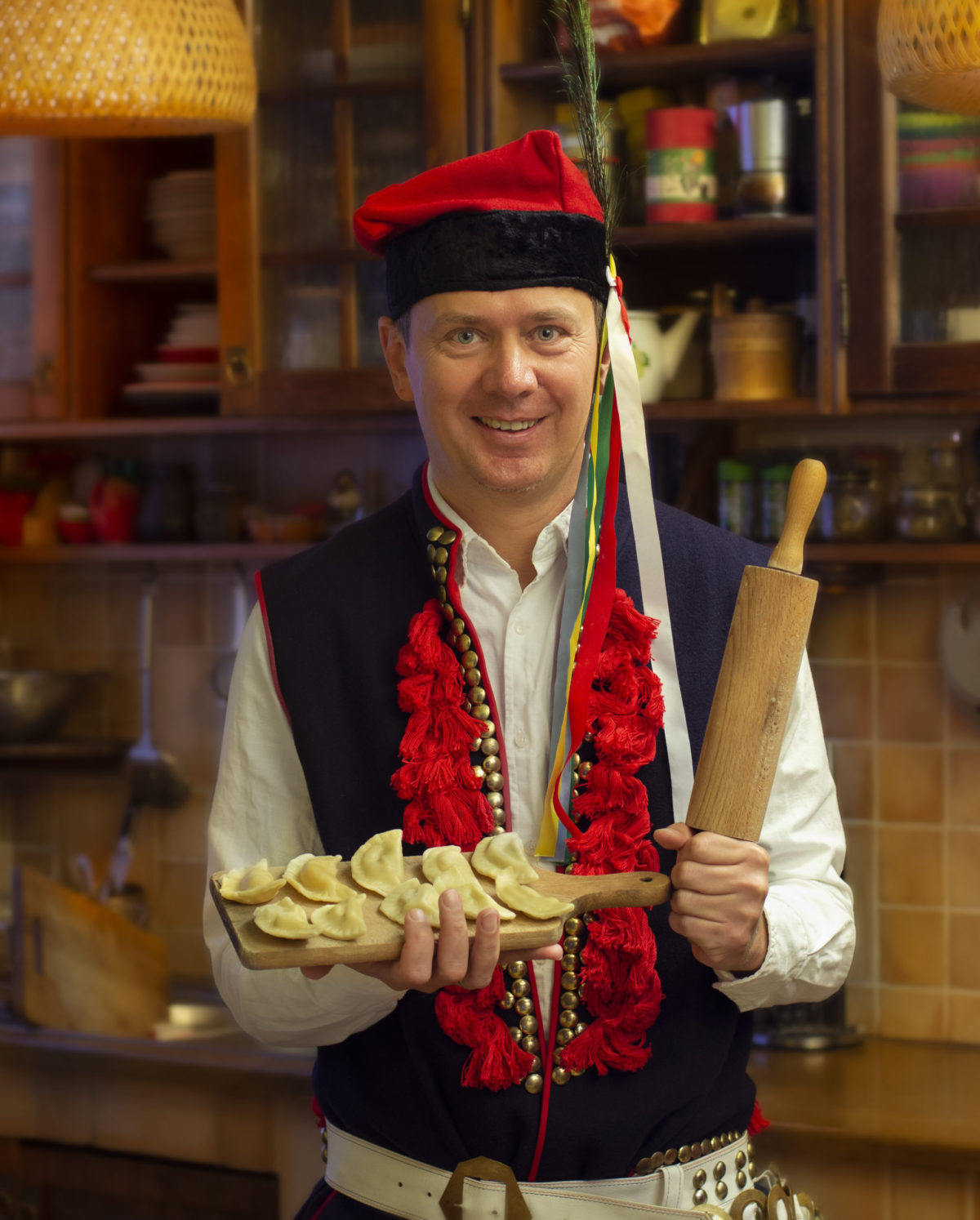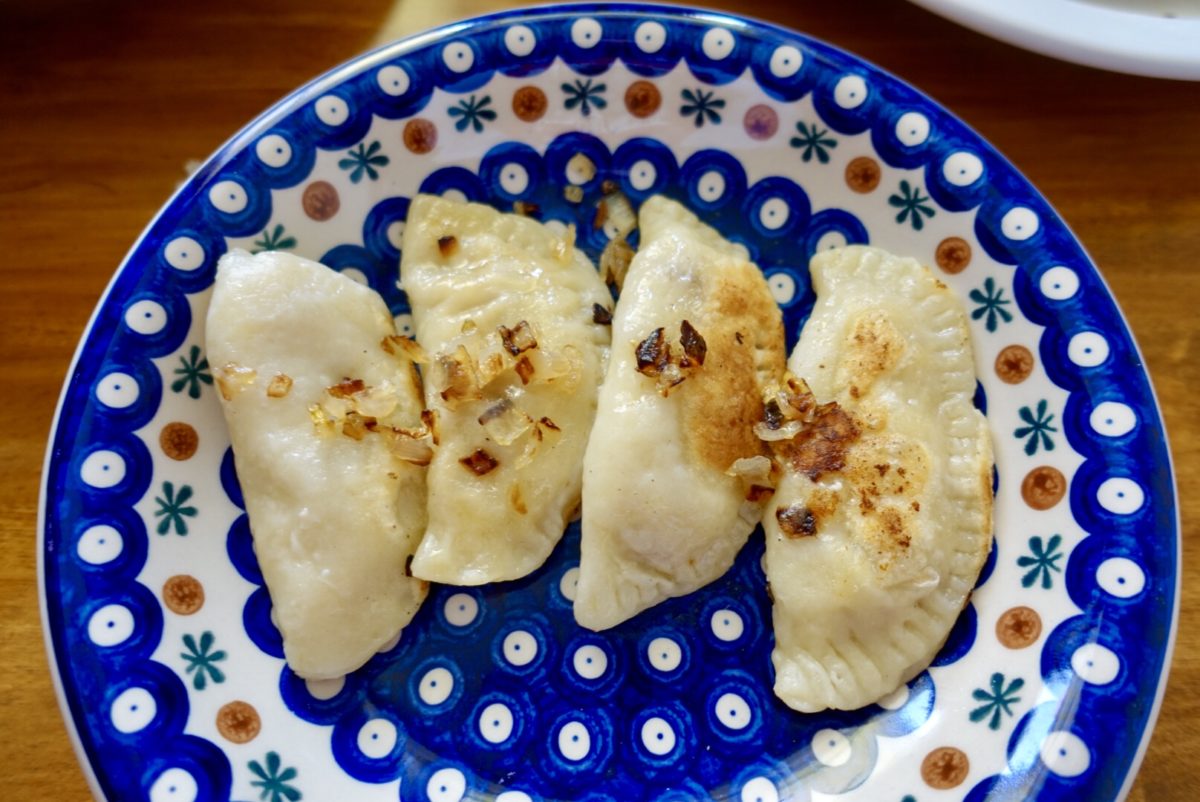Pierogi – the only Polish dish patronised by the saint.
If you’ve ever eaten pierogi, chances are fairly good that you fell in love at a very first bite – and we wouldn’t blame you. But if you’re wondering where this popular Polish dish originated, we have a secret to reveal.
Pierogi are pierogi – there is no better world for this famous Polish dish, although some people try to translate the name as Polish dumplings, Polish raviolis or even small empanadas – none of which are accurate. For us, it is a national dish – something unique and integral to our culture. You can picture pierogi as half-circular dumplings stuffed with many types of different fillings, made out of unleavened dough, and then boiled. The most classical fillings are cheese and potatoes, cabbage and mushrooms, or different type of meat. For Polish people though, it is also ok to have as a main course (not dessert!) sweet pierogi filled with strawberries, blueberries or any fruit of your choice. Once a year, you can find even more offbeat fillings like marzipan with poppy seeds or turkey with peaches or… anything you can imagine to have inside such a small thing like pierogi. This special occasion is the Pierogi Festival we celebrate in Krakow in the middle of August to honour the legendary, patron saint of pierogi: St. Hyacinth, the first Polish Dominican monk.
According to legend, when he was travelling to Krakow to settle down and create the first Dominican congregation at the beginning of 13th century, he was stopped in a village nearby by a huge thunderstorm and he had to spend the night in the local house. He found the peasant and his family very sad because, due to the awful weather and heavy wind, all the crops were totally damaged and they were afraid there would be nothing to collect and they might die of hunger in the wintertime.
So St. Hyacinth promised to help and proceeded to spent the whole night praying to God and asking for mercy. In the morning, a miracle allegedly happened and the villagers discovered that the whole agricultural area had been reborn and they could come back to their fields and cultivate crops. They were so happy and grateful to St. Hyacinth that they took wheat and barley, made flour, and prepared for St. Hyacinth the first pierogi ever.
That is why pierogi is said to be a dish with a patron saint. There is even an old expression of surprise – “Swiety Jacku z pierogami!” (St. Hyacinth and his pierogi!) meaning more or less, ‘good grief!’
Still hungry for more? We suggest jumping on our online Traditional Pierogi Cooking Class (aktywny LINK kierujący do imprezy) or join us during your real visit to Krakow for Home Cooked Krakow workshop (aktywny LINK kierujący do imprezy).
You’ll learn even more about this famous and delicious Polish food and you will have a lot of fun while visiting our house to prepare pierogi according to our family recipe.














